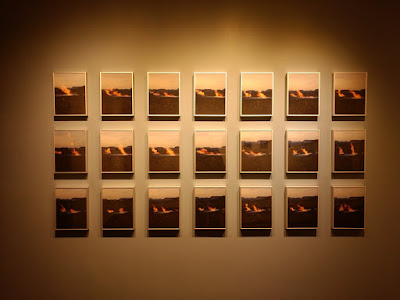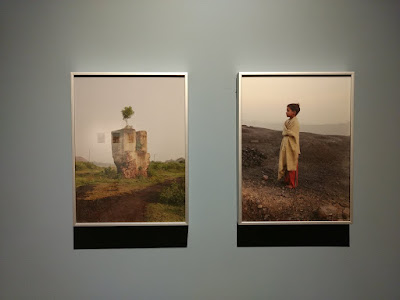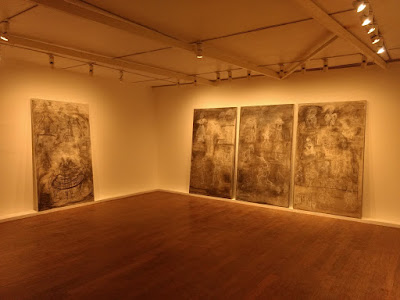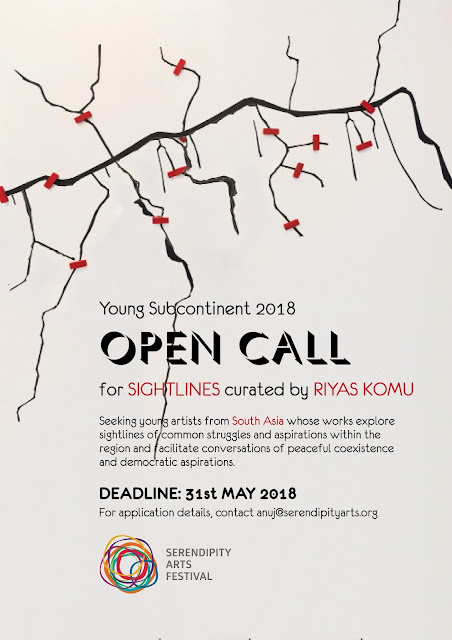On Kitchens \\ Architectural Digest
CONVERSATION 1
1. How have kitchens changed from the time of Independence to present times vis a vis - its, shape, size, lighting, how it is located within a house, attachments, equipment?
It is important to note the practice of cooking and its resultant spatial implications on the planning of the house, when studying the Indian condition. Historically, cooking spaces must have been a ground activity where much aspects of food: from preparation to eating would take place on the floor of the house. In India, floor allowed the kitchens to become more social, allowing women to get together easily towards preparation and sharing of work. Apartment living comes into our milieu by the early 1920s, when the kitchen gets formalised into a room within the house. Early modern kitchens (in India) already usurp the terrestrial kitchen to a raised platform, making the sitting women stand. They also transform the kitchen activity into a sort of "assembly-line" : cutting-cooking-washing! The linear platforms bring in a new idea of organization and sanitation but at the same time complicate the hierarchical relationships of gender, caste, class w.r.t. the ideas of sacred and profane.
Several older apartment plans will show more than one door to the house - one for the toilet cleaners, one for the maid and the last for the owner. Thus kitchens would have their own service doors to keep the maids or cleaners (who belonged to a lower class) separate. Modernity thus got assimilated with deep contradictions.
For a long time, cylinder was the key object of the kitchen, around which storage spaces were planned. Steel utensil organizers can still be seen in some households. Refrigerators and ovens changed the planning of the kitchen significantly - and made the presence of electrical points within the space essential. The geography of the kitchen changed after the introduction of the piped gas, and the rapid take over of the modular furnitures. In recent times, one sees the shrinking size of the kitchens in the planning of apartments. The kitchen is seen as a mere functional space where social interactions within the house do not take place. Hence, their space is released into the other areas of the house. Dining - which once was a table, has now become a "Space" within the house. One often sees the dining notches carved out in living rooms in present-day apartments very evidently.
2. When did the change start from broad, expansive kitchens to smaller versions - both in India and abroad, what influenced this change?
Several socio-economic dynamics have also affected the way in which kitchens are imagined. Seen as an activity that does not contribute to the capitalistic process directly, household cooking (and therefore the kitchen) is often undervalued space, reduced to a storehouse. Such a move has serious implications that need to be studied. Moreover, one needs to understand how it gets gendered and further, what socio-cultural rubrics it operates within different castes and classes across different regions within India.
3. How popular are open kitchens in present times? What is the reason for the popularity and when did this change start taking place?
Open kitchens allow to merge smaller spaces into a large one, and help releasing space. In patriarchal setups however, where households operate on strict rules for women, kitchens are still not opened out to the public parts of the house (like the living room). The open kitchen perhaps became a way to symbolically claim values of modern living and lifestyle. Although having an open kitchen would necessitate its organized look at feel, forcing attention towards hygiene and cleanliness.
4. Do you think that traditional modes of cooking and equipment are now in danger of disappearing forever with the change in the size of kitchens? is it good or not desirable?
Is there a monolithic traditional mode of cooking? I am wondering what values are you trying to invoke in the traditional? Instead of the fear of disappearing, we must looking at the process of cultural transformation of the kitchen and its resultant effect on the human body. Improved amenities within the kitchens have certainly brought more dignity to the person who operated the kitchen - in our case, primarily the woman. If modern amenities are able to release time for women to participate or engage equally in activities that she could not pursue before, then such transition is welcome. If we are able to ascertain what values of the tradition and traditional equipment do we wish to retain, we may be able to bring it to our modern lives and amenities. However, traditional modes of cooking and equipment may also be deeply feudal and gendered and for once, we must consider the virtue of their disappearance too!
5. The concept of mess kitchens or work areas to supplement the kitchen space seems to be in vogue now, can you tell us a little about this?
Such spaces can only work within extremely communal societies. With strict ideas of the sacred and profane within the different classes and castes, food is a complicated affair in Indian social space. Community kitchens have been experimented in many places, but most operate within a single caste-group (you can think of the langars in Gurudwaras). I do not know about the "mess kitchens" that you point out.
CONVERSATION 2
Hi Anuj,
A quick clarification - I am not really sure what you mean by this:
The linear platforms bring in a new idea of organization and sanitation but at the same time complicate the hierarchical relationships of gender, caste, class w.r.t. the ideas of sacred and profane.
Please can you let me know what you mean by this?
Thanks
Dear Fehmida,
In older traditions, the processes of cutting, cleaning and cooking were often dispersed into different locations of the house. The house itself wasn't a BHK type (apartment type). These locations indexed certain hierarchical relationships that structured the overall process of consumption. With the introduction of the modern kitchen, all these different activities are streamlined into one room, more specifically onto a single platform counter. Interior designers and space planning manuals will tell you how these need to be organized for efficient functioning of the kitchen in modern homes. Thus, we see these kitchen counters with a space for preparation, cooking and washing (in that order) provided in a line - almost like an assembly line fashion. Such planning of the kitchen is generalized within newly built apartments to which, residents have to stick to (despite their alternative cooking practices). Those who can afford, alter their kitchens in order to continue older customs. However, within the standardized geography of modern homes (BHK type), these changes do not really offer much scope, and the most optimum solution is to stick to the linear platform.
The linear platform forces, to be sure, the people involved in cooking to be on the same counter. Given the deeply culturally coded gender roles in our heteronormative society, the kitchen can be seen as an instrument of divide or unision - for in the progressive, liberal families, the man and woman will be able to work together, however, in more conservative and traditional families, the kitchen will remain the domain of the woman, pushing the man out. This is my theoretical speculation.
Secondly, a lot of households still follow ideas of 'jhootha' or 'aitha' - which indicates that any thing eaten or partly eaten (even tasted / anything touched to the mouth, or touched with an impure hand) should not be mixed with the fresh stock - including vessels that contain them. The water pot is sacred, for it is worshiped and changed every year on an auspicious day. The used dishes and plates should be kept away as a matter of hygiene. The platform with the embedded sink does two things here: 1. It mixes up these "used/dirty" utensils with the fresh ones. The sink is also the place from where you draw water to clean things - thus the place of cleansing is also the place that accommodate the unclean. 2. The maids (who are often seen as a lower class, may also belong to lower class) now come on the same platform for cleaning the vessels. Traditionally, the place of cleaning would be outside or away from the cooking space.
Again, these are my theoretical speculations.
I hope you now understand my point on the complication of hierarchical relationships of gender, caste and/or class. One can present many case studies to bring out different shades of how modern apartment kitchens negotiate or work out these differences.
Let me know if this helps.
Best.
Anuj.

























